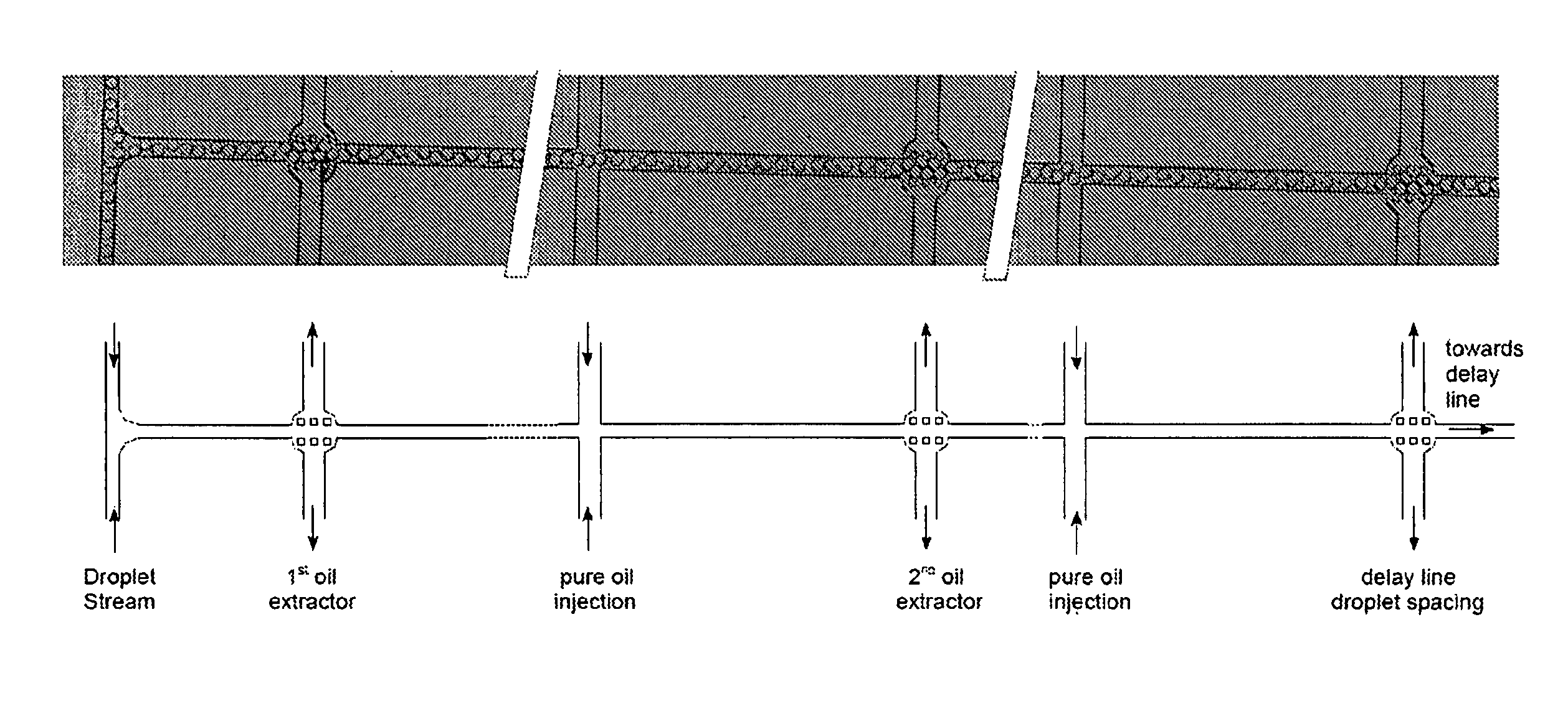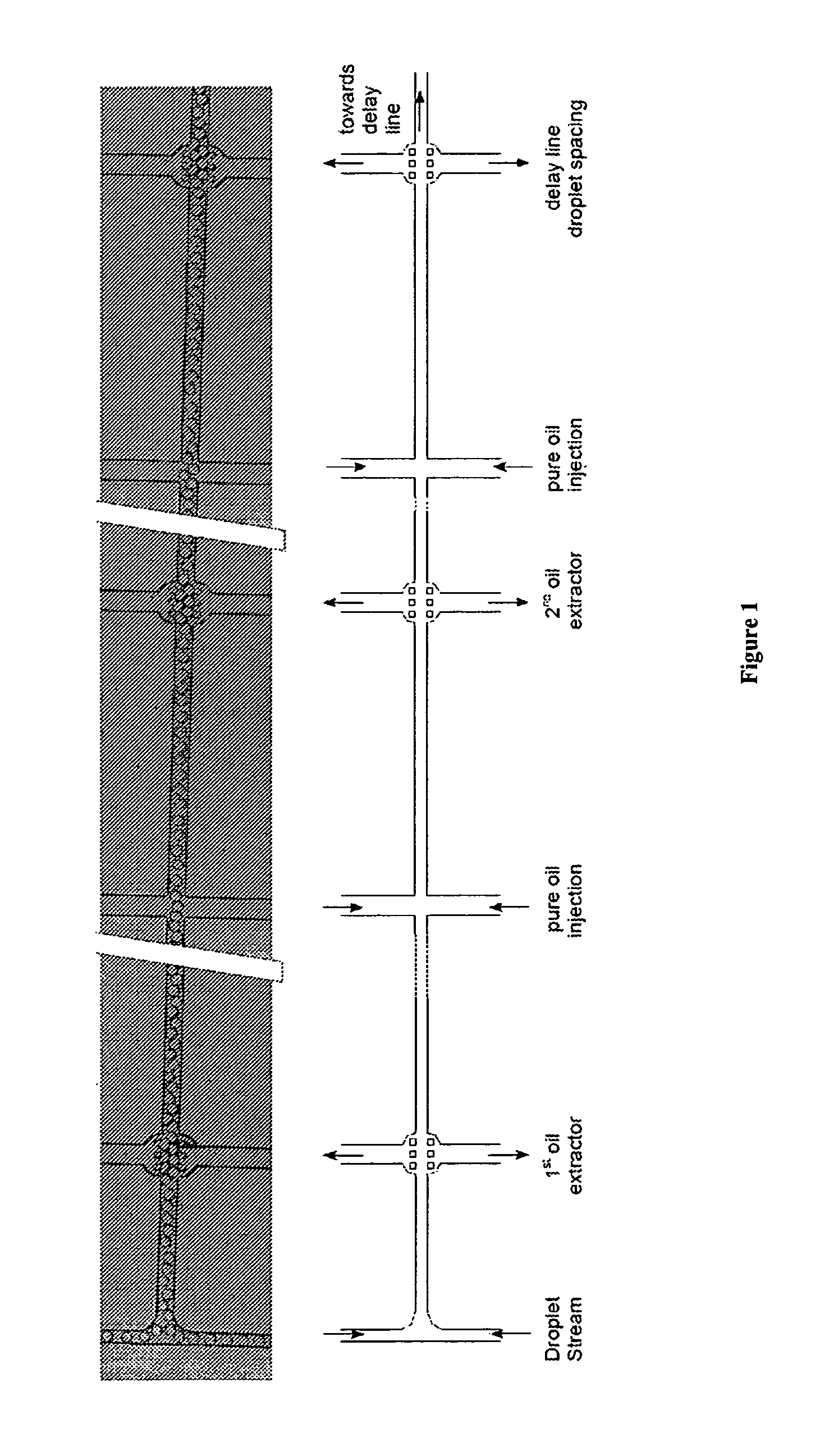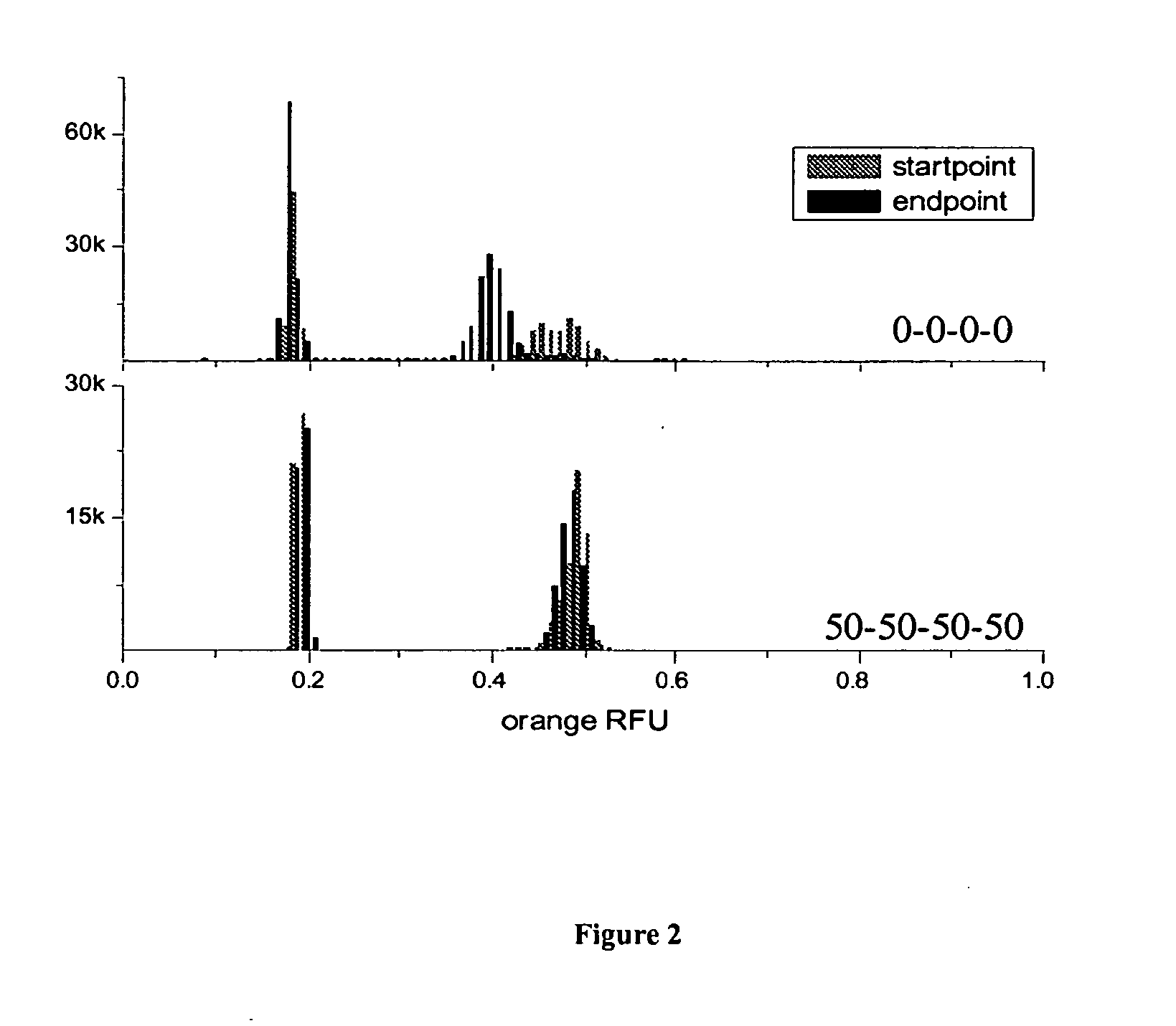Microfluidic systems and methods for reducing the exchange of molecules between droplets
a microfluidic system and droplet technology, applied in fluid controllers, laboratory glassware, instruments, etc., can solve the problems of high detrimental, surface adsorption of reactants, and the limit of the smallest volume of reagents that can effectively be used, so as to prevent the coalescence of microdroplets
- Summary
- Abstract
- Description
- Claims
- Application Information
AI Technical Summary
Benefits of technology
Problems solved by technology
Method used
Image
Examples
example 1
[0220]The continuous stream of droplets in surfactant loaded oil is subsequently subjected to several actively controlled extractions of the continuous fluorinated oil phase and injections of pure oil (See, FIG. 1). This apparatus and method first reduces the volume fraction of surfactant loaded oil, thus densifying the droplets in the main channel after the extraction. Subsequent injection of pure oil dilutes the surfactant in the continuous phase. This injection of pure oil also serves to respace the droplets. This can be repeated several times, which reduces the micellar concentration considerably. Additional oil extractions can be added to control the droplet density in the delay line. (See, the right margin of FIG. 1).
[0221]The effect of such an actively controlled oil exchange on the exchange of small fluorescent molecules between droplets was monitored in a delay line on chip (See, FIG. 2). The fluorophore under investigation was resorufin. Two droplet populations with differ...
example 2
[0223]In this example, droplets are produced and then transferred from the surfactant loaded oil stream into a surfactant free oil stream making use of the laminar flow conditions in a microfluidic device. The focus is to switch the droplets in an exchange chamber from one laminar oil stream to an adjacent laminar stream. In this way, the aqueous droplets leave the surfactant loaded oil stream after a period of time sufficiently long to stabilize the interface and enter a surfactant free oil stream. The droplets are now in a completely micelle free environment and even if surfactant detaches from the interface and enters the continuous phase, this process is slow and will end when the CMC is reached. A schematic design of the exchange chamber is illustrated in FIG. 3. The droplets enter the chamber from the lower left and their stream (surfactant loaded oil and aqueous droplets) is paralleled by a stream of pure oil, entering from the lower right. Due to the laminar flow regime the ...
example 3
[0230]In this example, droplets are created and directed into a reservoir (e.g., vial or other container) that is mounted on top of the microfluidic device (See, FIG. 8). This reservoir is filled with pure oil and thus the aqueous droplets will cream / rise towards the top of the reservoir due to the high buoyancy force of water in fluorinated oil (the density difference is about 1.7). Additionally, pure oil is injected from the top of the reservoir which creates a stream of pure oil in the inverse direction of the creaming droplets. The outlet of the reservoir, necessary to avoid an over pressure, is also at the bottom. The principle of this device is to transfer the droplets to a surfactant free environment and to continuously wash them in this environment. The emulsion can be stored in this reservoir for long periods of time (longer than in on-chip delay lines) and be reinjected. The reinjection is achieved by inverting the flow directions: pure oil is pushed from both bottom inlet...
PUM
 Login to View More
Login to View More Abstract
Description
Claims
Application Information
 Login to View More
Login to View More - R&D
- Intellectual Property
- Life Sciences
- Materials
- Tech Scout
- Unparalleled Data Quality
- Higher Quality Content
- 60% Fewer Hallucinations
Browse by: Latest US Patents, China's latest patents, Technical Efficacy Thesaurus, Application Domain, Technology Topic, Popular Technical Reports.
© 2025 PatSnap. All rights reserved.Legal|Privacy policy|Modern Slavery Act Transparency Statement|Sitemap|About US| Contact US: help@patsnap.com



